#moroccan history
Text


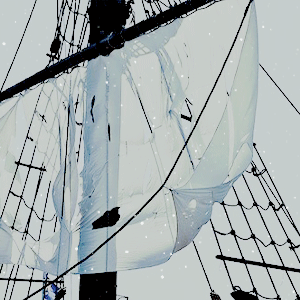
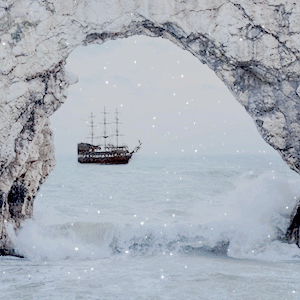
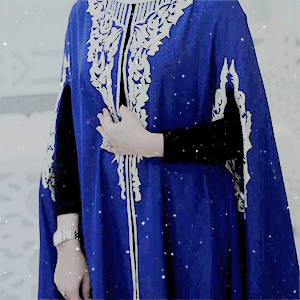




badass women of history ↝ sayyida al hurra, the pirate queen of morocco
sayyida al hurra, real name lalla aicha bint ali ibn rashid al-alami, was hakimat titwan between 1515–1542 and a moroccan privateer leader during the early 16th century. she became the wife of the wattasid sultan ahmad ibn muhammad.
#sayyida al hurra#historyedit#historicaledit#history edit#historical edit#badass women of history#bwoh#morocco#moroccan history#women in history#historyedit*#moodboard#moodboard*#mine
97 notes
·
View notes
Text



The Art, The Artists.
— Behind the scene : « Moroccan Courtyard by Moroccan Craftmen » at the MET Museum, New-York
#morocco#moroccan culture#north africa#moorish#moors#moroccan#africa#moroccan history#moorish architecture#architecture#islamic architecture history#moroccan architecture#architecture history#islamic architecture#buildings#met museum#moroccan art#moroccan pattern ·#moroccan design#zellij#zellige#gebs#moroccan craftsman#moroccan craftsmanship#moroccan crafts#architecture lovers#masjid#courtyard#al andalus#moroccan style
45 notes
·
View notes
Text



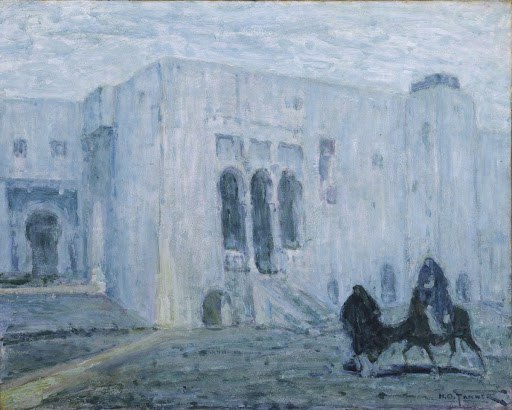

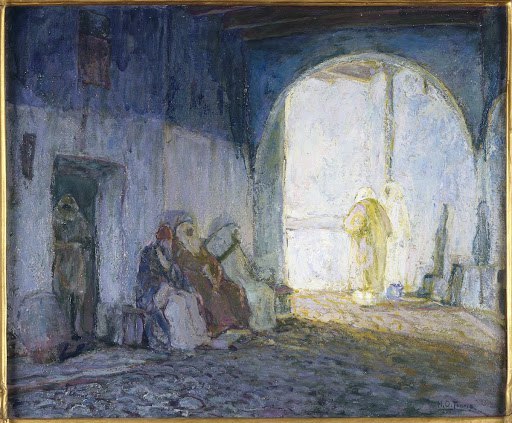



Tangier in the works of Ossawa Tanner
Tangier is a city in northwestern Morocco. It is on the Maghreb coast at the western entrance to the Strait of Gibraltar, when the Mediterranean Sea meets the Atlantic Ocean off Cape Spartel. Many civilizations and cultures have influenced the history of Tangier, starting from before the 10th century BCE. Between the period of being a strategic Berber town and then a Phoenician trading center to the independence era around the 1950s, Tangier was a nexus for many cultures.
#tangier#henry ossawa tanner#north africa#the amerrican museum of art#los angeles country museum of art#oil paintings#africa#artworks#oil painting#blue academia#dark academic aesthetic#light academia#history#moroccan history#edge of morocco#dark acadamia aesthetic#morocco#blue#green#artwork
59 notes
·
View notes
Text
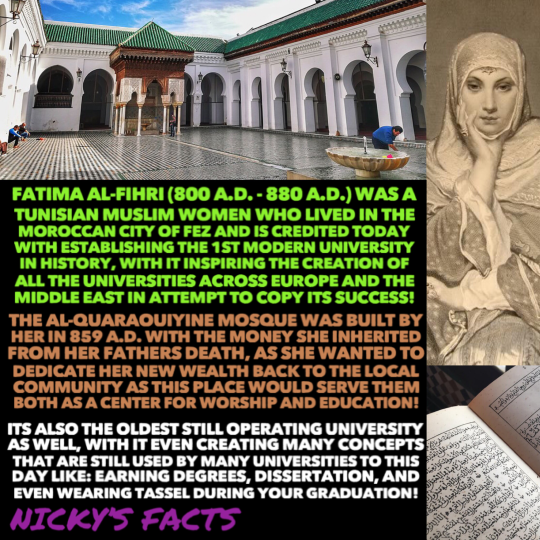
Thank You Fatima al-Fihri for providing easier access to knowledge and in turn helping to empower people far beyond your time!
🕌🧕🏽📚
#history#fatima al fihri#morocco#al quaraouiyine university#womens history#education#fez#historical women#girl power#university#moroccan history#dissertation#women empowerment#middle ages#female role models#world landmark#educators#higher education#women leaders#muslim history#girl education#women empowering women#grl pwr#muslim women#medieval#tassel#nickys facts
14 notes
·
View notes
Photo

“Little Son of Sultan Is Captivated by the Yo-Yo,” Toronto Star. September 26, 1932. Page 2.
----
Toys charm small sons of sultans as greatly as they do other little folk of high or low degree, in all nations. While in Paris, France, with his father, the sultan of Morocco, little three-year-old Molay el Hassan, was fascinated by the new French toys and here he is, all interest centred on a toy called the yo-yo.
#paris#mulay al-hassan#crown prince#sultan of morocco#yo yo#children's toy#french colonial empire#moroccan history#french imperialism#french protectorate of morocco#interwar period
3 notes
·
View notes
Link
“The 16th century was a volatile and violent era in which cities such as Tétouan required decisive, strong, competent, and intelligent leaders to survive. Al-Sayyida al-Hurra was definitely all these things and more. She was a woman who rose to power and ruled in her own right for decades. She did not hesitate to take action, when necessary, in the form of diplomacy and outright war to safeguard her city. Despite the scarce information on her life in the sources, she certainly left her mark on history.”
#Al-Sayyida al-Hurra#history#women in history#women's history#queens#pirates#pirate women#morocco#moroccan history#16th century
6 notes
·
View notes
Text
dying to see a new movie/serie about the Battle of the Three Kings.... like the historian in me, the moroccan in me just wants to be satisfied like the battle is INSANE, some GOT shit
2 notes
·
View notes
Text
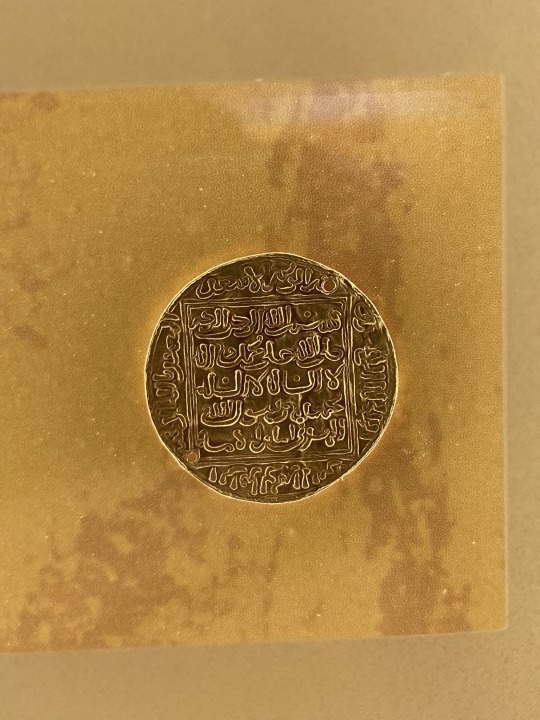
1 note
·
View note
Text
And thus, to wrap things up, the context of Tondibi, which fell upon the Songhai like the wolf upon the fold:
And as a result of the legacy of the Wattasids and the influence of the Ottomans, Safavids, and Mughals the Saadi dynasty that replaced them built an extremely efficient gunpowder army of its own. This army was able to ultimately evict European colonialism and to keep it out as long as it existed. The same influences that led it to do the one also led it to raid the Songhai for gold and wealth, and that process, as well as the raw power of the gunpowder empire age colliding into them with an inexorable power, set in motion all else that followed.
Ultimately the core of the battle that began the long and gruesome litany of horrors called the slave trade was the transformation of Moroccan Muslim states from light cavalry with swords and lances to gunpowder forces with cannons and muskets. Not from mindless aggression, from seeking to succeed where the Wattasids failed, doing so, and needing to recoup the expenses of the brave new modern army they built to do it.
#lightdancer comments on history#black history month#moroccan history#battle of tondibi#saadian dynasty#al-mansur of morocco#african history
0 notes
Text
soooo many of the deep scars drawn up this week not only over antisemitism but colonialism and the legacy of violent imperialism.
anyway I’ll say it again but many aspects of anti Asian racism and antisemitism are not fully interchangeable but deeply linked, and there are a lot of lines of ideological reasoning our communities should not be getting in bed with rn. One of the most significant is the “hive mind” that makes every Asian or Jew responsible for what states do in their name, another is inherent distrust or inscrutability over having “weird rituals” or secretly Evil plans, another is dual loyalties. Please be aware that if you see people using this logic towards one group they’ll likely be comfortable using it with another
#It should occur to many people that Jews can be victims of both?#We can hold multiple forms of trauma in our family history????#Me and my other Ashkenazi friend who are Tagalog and Bengali especially#My friends who are Moroccan-Jewish and Baghdadi-Jewish#Drawing a hard line between victims of antisemitism and colonization is really isolating actually#I don’t enjoy being called a white coloniser over recognizing war crimes carried out against JOC#Seeing people make very simplistic takes on imperialism to jsutify various points I CAN HEAR YOU
80 notes
·
View notes
Text
The history of Moroccan rugs dates back centuries and is deeply rooted in the culture and traditions of the various indigenous tribes in Morocco. But this ancient tradition is struggling to survive in the modern world.
#Moroccan rugs#Handmade Crafts#Fair trade#Weaving#dyes#cultural heritage#exploitation#tradition#ancient#history#ancient origins
44 notes
·
View notes
Text

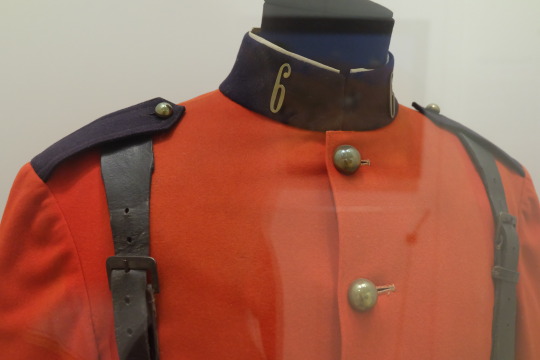

Uniform of a Moroccan Askari del Tabor from the Spanish Empire dated to 1908 on display at the Museum of the Army in Toledo, Spain
The early units of Native Police were created in 1908 and fought in the 1911 campaign alongside the Harka irregular units. From 1912 onwards they were organised into mias or companies under the name of the kabila that they served. The senior ranks and officers belonged to any Corps of the Spanish Army whereas the recruits were drawn from members of the kabila.
The mission of the Native Police was to guarantee law and order in the kabilas and to smooth the way for political "action and territorial organisation" Consequently, they increased in number at the same rate as the growth of Spanish occupation of North Africa. With the increase in the number of armed incidents, the units began to be deployed in military operations thereby shedding its role as a guarantor of law and order.
Photographs taken by myself 2019
#uniform#fashion#spanish empire#morocco#moroccan#20th century#military history#bourbon-anjou#museum of the army#toledo#barbucomedie
7 notes
·
View notes
Text
Ancient Silky Moroccan Caftan & Bedi’ya (vest) Richly Embroidered, Tetuan, early 19th century
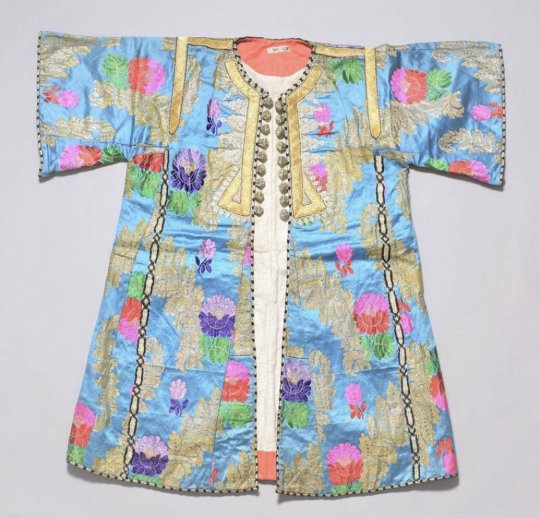
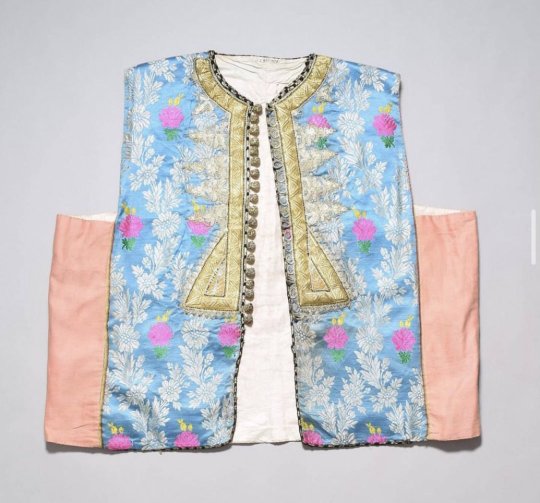
#morocco#moroccan culture#north africa#moorish#moors#moroccan#africa#moroccan history#moroccan caftan#takshita#moroccan clothing#moroccan style#vintage morocco#vintage fashion#north african#amazigh#arab#moroccan wedding#moroccan art#moroccan design#moroccan clothings#moroccan women#moroccan fashion#history of fashion#fashion#style#couture#moroccan couture#moroccan inspiration#old morocco
22 notes
·
View notes
Text
having jewish family from n iraq general area is very strange. n iraq area is a bit of an outlier from its neighbors people group-wise because it’s often kurd = muslim; arab = muslim also; assyrian = christian (or at least an overwhelming amount of christians are assyrian); yazidi = yazidi; but jews are called ‘kurdish jews’? they probably just got that label because they were in the area (some have ‘tribal’ last names if they were from the literal towns the tribes got their names from), but for example syrian jews who lived in aleppo/damascus and spoke arabic are called syrian jews, some people use “arab jew” but afaik most don’t
in that context “kurdish jew” seems a little...misleading? “assyrian jew” is too, they were both religious minorities and spoke aramaic but jews have a separate history (and due to current politics it feels insensitive but idk.) and both of those can be used by israeli govt stuff for propaganda purposes, so looking into sources for this is nigh impossible. tbh i prefer ‘mesopotamian jew’
#strange situation overall that i don't think can be solved anytimne soon#*srael pretty much fucked up jewish history research that isnt european#ultimately small potatoes compared to what palestinians are going through#weird pan-’mizrahi’ ethno-anthropology ultimately relates back to it. colonialism & all that#both 'kurdish jew' and 'assyrian jew' sources i managed to find were zionist propaganda. sobs#not to mention it was a very small community and there aren't a ton of descendants in the world in comparison to like. moroccan jews#ironically the most reputable + objective historical account w/ interviews from people who lived it#was compiled by someone currently head of netanyahu's 'ministry of arab affairs'#such is the state of mizrahi jewish history research#there’s also historical records referring to them both as ‘kurdish jews’ and ‘assyrian jews’#but 'kurdish jews' could've been location-based and probably wasn't in the modern context of 'a people'#('kurdish christians' was often used to refer to assyrians for example)#and 'assyrian jews' was also used to refer to s. iraq general area jews and syrian jews#i’d complain about how it’s annoying that jews are ‘their own thing’ unless they’re bene israel/’kurdish’/yemenite etc but#ill uh. explain this in a reblog
22 notes
·
View notes
Text
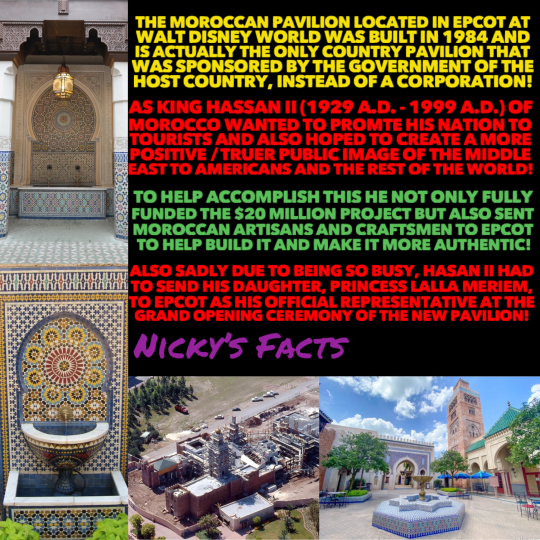
Morocco is a strong believer in Disney diplomacy!🏰
🇲🇦🕊️🇺🇸
#history#morocco#epcot#walt disney world#theme park#royalty#moroccan history#disney#florida#king hassan II#world showcase#theme park history#art#disney girl#architecture#disney world#united states#disney history#diplomacy#princesscore#monarchy#disney epcot#moroccan culture#middle east#american history#nickys facts
3 notes
·
View notes
Photo

Extrait du journal franco-marocain. DR. 9 avril 1939.
“Entre le mois de février et le mois d’avril 1939, les volontaires internationaux regroupés dans les camps des plages du Roussillon vont produire de nombreuses revues. Cette presse des sables mélange le plus souvent informations générales, contenus politiques et activités culturelles. Une revue concerne les deux camps. Edité par L’AVER (Amicale des Anciens Volontaires en Espagne Républicaine), le Trait-d’Union est le bulletin intérieur des volontaires internationaux des camps d’Argéles-sur-Mer et Saint- Cyprien. Cette production éditoriale quitte ensuite le Roussillon pour le camp de Gurs avec le transfert des brigadistes au printemps. Voici quelques pages produites à Argelès-sur-Mer entre les mois de février et avril 1939 par différents groupes.” Source.
#camp de concentration d'argelès-sur-mer#argelès-sur-mer#concentration camps#camp de concentration#prisoner resistance#prison literature#words from the inside#war refugees#spanish civil war#international brigades#franco-marocain#moroccan history#french colonial empire#protest literature#antifascism#pyrénées-orientales#histoire de france
0 notes